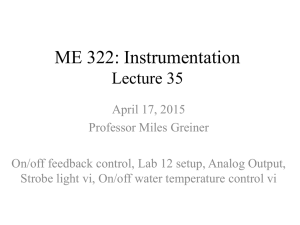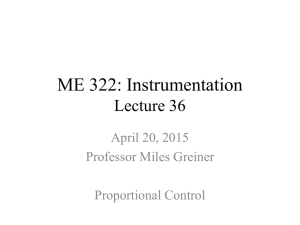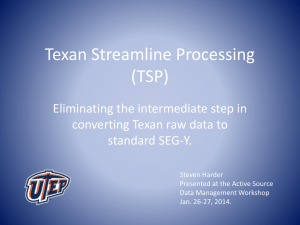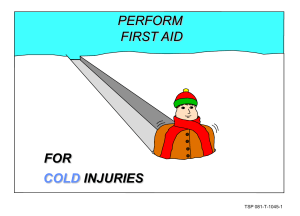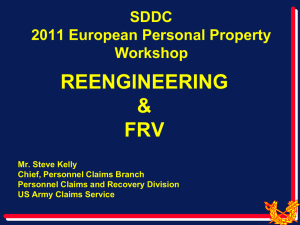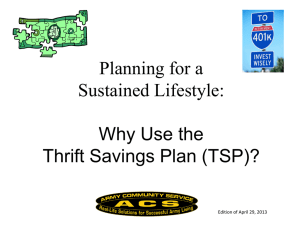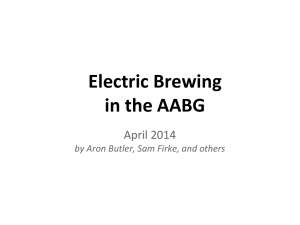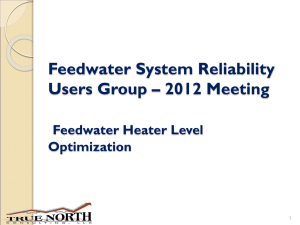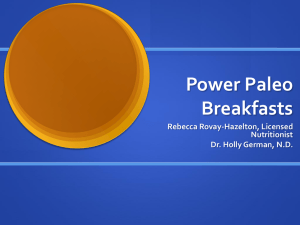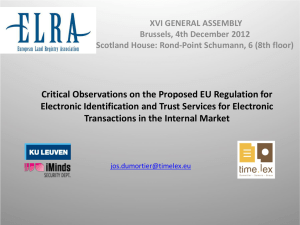Lecture Slides
advertisement
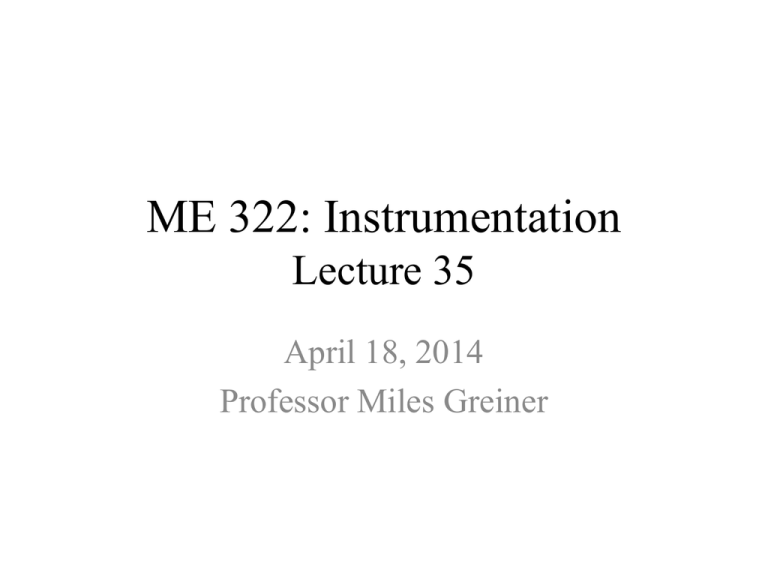
ME 322: Instrumentation Lecture 35 April 18, 2014 Professor Miles Greiner Announcements/Reminders • HW 11 is due now, • HW 12 Due Friday, 4/25/2014 • Don’t start L12PP until next week (revising) • Next week: Lab 11 Unsteady Karmon Vortex Speed • 1.5-hour periods with your partner • Schedule (please be on time and come prepared) – http://wolfweb.unr.edu/homepage/greiner/teaching/MECH322Instrumentation/Labs/Lab%2011%20K armon%20Vortex/Lab%20Index.htm • Extra-Credit LabVIEW Workshop – Today, 2-4 PM, Jot Travis Room 125D – Make sure you sign-in to get credit • Lab Practicum Final – Guidelines, Schedule • http://wolfweb.unr.edu/homepage/greiner/teaching/MECH322Instrumentation/Tests/Index.htm – Practice Periods • May 2-4, 2014 Fry Pan Controller Increase TSP Decrease TSP • Bi-metallic strip deforms as its temperature changes • Opens switch (turns heater off) when it gets to hot, and closes it (turn heater on) when too cool • Dial physically moves strip and sets desired or “set-point” temperature TSP (at which heater turns off) • Feedback Control • Measures temperature and adjusts corrective action • Full on/off control • “Bang/Bang” control • Would not work for a cruise control On/Off Control TSP T T Heater off Error e=T-TSP Heater on • The sensor and heater are not at the same location – By the time the sensor reaches the set-point temperature TSP and turns off the heater, the heater is above TSP – The sensor temperature continues to rise as energy from the heater diffuses it. – Eventually the sensor temperature decreases below TSP and the controller turns on the heater – There is a delay before the sensor detects a temperature rise • Even though the sensor is very accurate and turns the heat on/off at TSP the delayed response of sensor to heater causes on/off control to exhibit oscillations. – Oscillations might be smaller if we did not use full on/off control – We would like the error e = T-TSP to be zero. Desired Characteristics • Reach desired temperature quickly • Minimize error e = T – TSP • Robust to changes in the environment – Such as wind and external temperature • Be able to follow time-dependent set point TSP(t) Controller Examples • Thermostat • Oven • Motor speed controller – Garage door opener, fan • Car cruise control (not full on/off) • Unmanned Autonomous Systems (UAS) – Direction, speed, altitude, level • Missile or rocket guidance – Correct for wind conditions • Self-driving cars – Sense distance between cars and maintain it • In each case, sense variable to be controled, compare to desired value, and take corrective action Lab 12 Temperature Feedback Control • Measure temperature in a beaker of water, T – Thermocouple, signal conditioner, myDAQ, VI • You’ve done this already • Is the water temperature uniform? What is T? • Control power to heater to bring water to TSP – Before: the heater was on 100% of the time so the water boiled – Now: Actively turn the heater on/off according to different control logic structures • i.e. On/Off, Proportional, Integral… • Use myDAQ analog output to control a digital relay that turns heater on/off • If TSP = TEnvironment is there a need for control? • What if TSP is > 100°C? Lab 12 Setup • myDAQ has two analog output (AO) channels – V = ±2 and ±10 volt ranges, N = 16 (216 = 65,536), – Low current (2 mA, can’t power heater) – http://www.ni.com/pdf/manuals/373060e.pdf (page 36) • Solid State Relay = voltage-controlled switch – Switch is on (closes) when V > 3 volt; Off when V < 1 volt – http://wolfweb.unr.edu/homepage/greiner/teaching/MECH322Instrumentation/Labs/Lab %2012%20Thermal%20Control/Lab%20Index.htm Schematic Heater TC Signal Conditioner Analog Input ±10 and ±2 Volt,16 bit TC myDAQ Solid State Relay Tyco SSRT-2400-10 Power Switch Analog Output ±10 and ±2 Volt,16 bit Input + Ground Turn light on/off • NI Measurement and Automation explorer – Analog Output – Update • LabVIEW VI – Create Channel (Digital Output) – Write Data – While Loop VI to turn light on/off • Block Diagram and Front panel Full on/off Control • LabVIEW VI “logic” – Measure thermocouple temperature for 1 sec • Average, T, display – Compare to TSP (compare and select icons) – Turn 200 W heater on/off if T is below/above TSP – Waveform Chart • T and TSP versus time • e = T-TSP versus time – Repeat • Starting Point VI – Temperature versus time from earlier labs – http://wolfweb.unr.edu/homepage/greiner/teaching/MECH322Instrumentation /Labs/Lab%2012%20Thermal%20Control/Lab%20Index.htm Full On/Off Temperature Control Front Panel Next time • Review program construction/logic • Consider proportional control – Heater Power is proportional to error e = T-TSP Fractional Time On (FTO) If DT = 0 then full on/off If DT > 0 then proportional 3 Temp Domains 3) T < TSP – DT FTO = 1 2) (TSP – DT) < T < TSP T = TSP T = TSP – DT 3) T > TSP f=0 f=1 FTO = 0 Strobe Light VI

